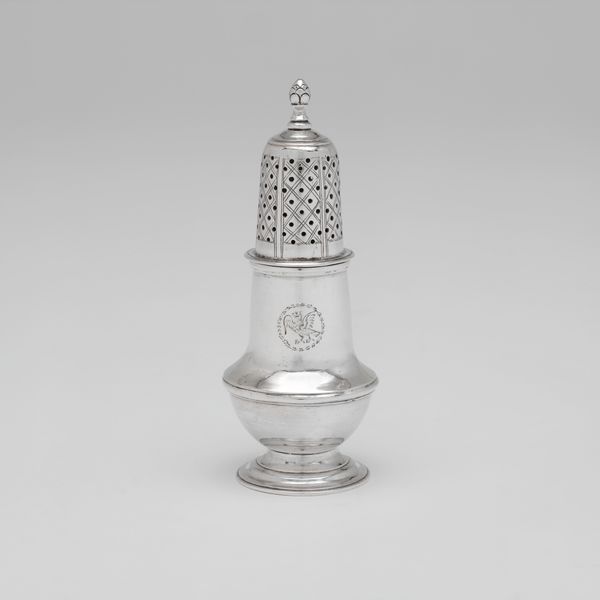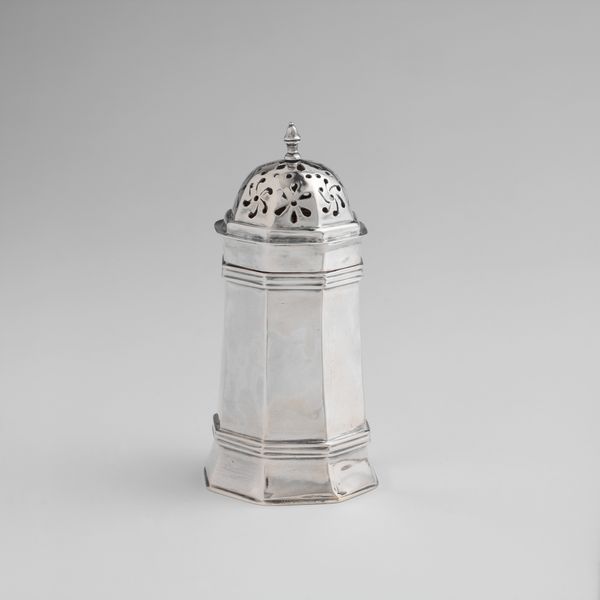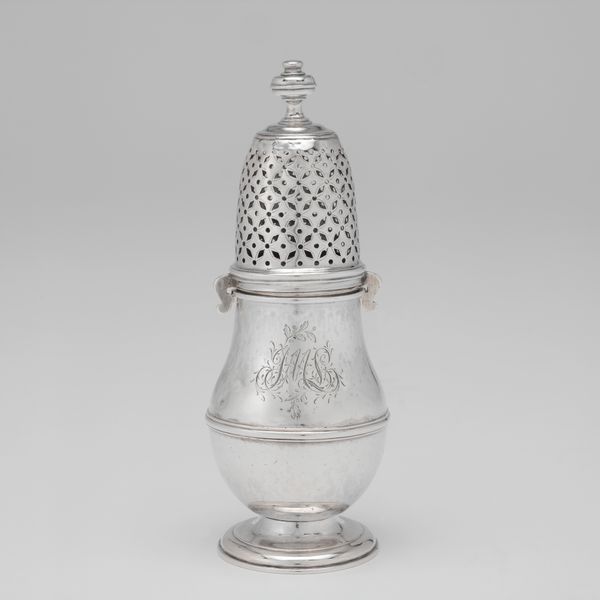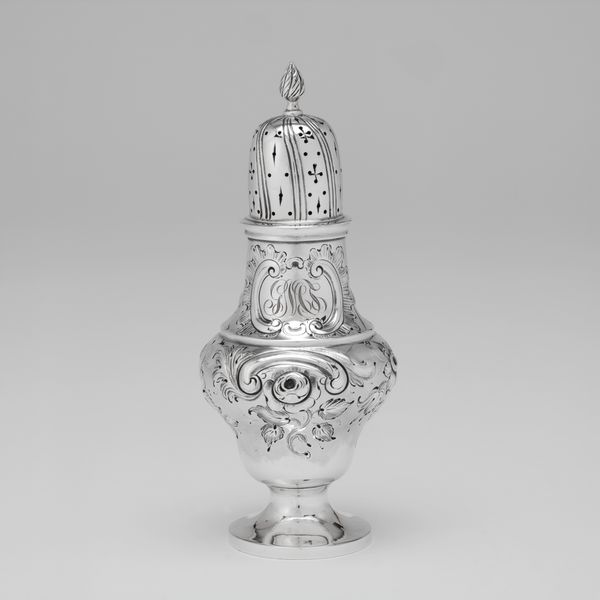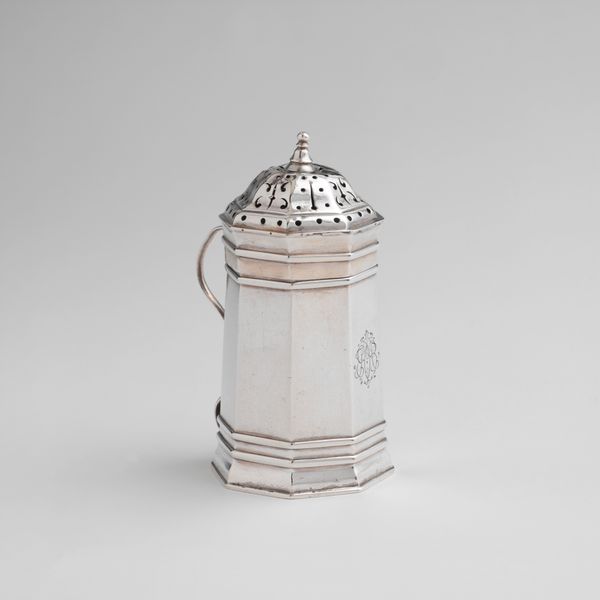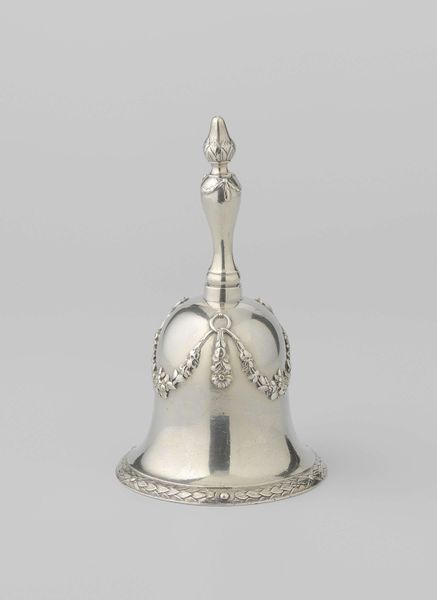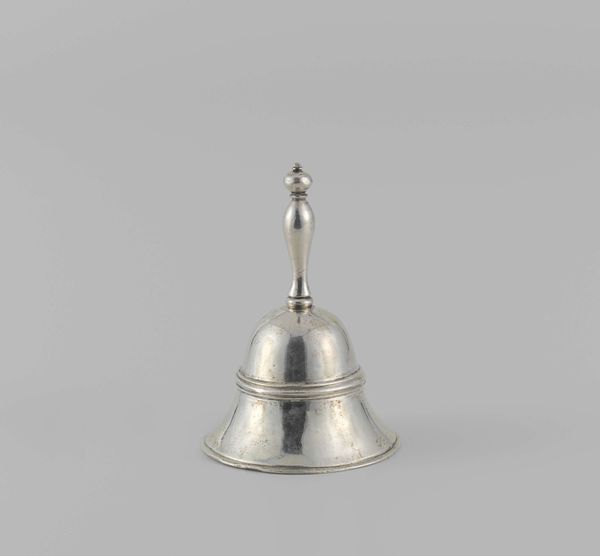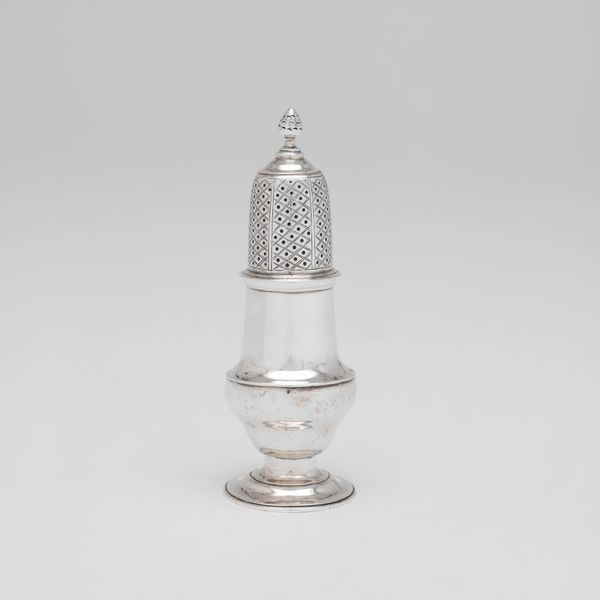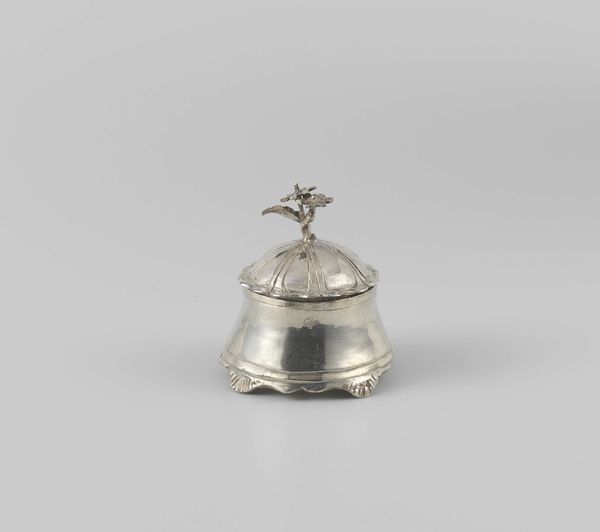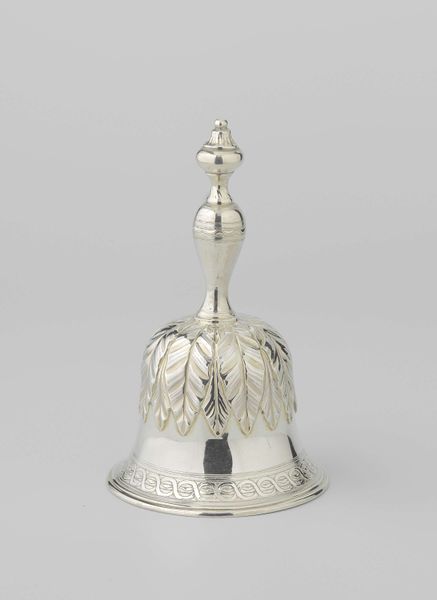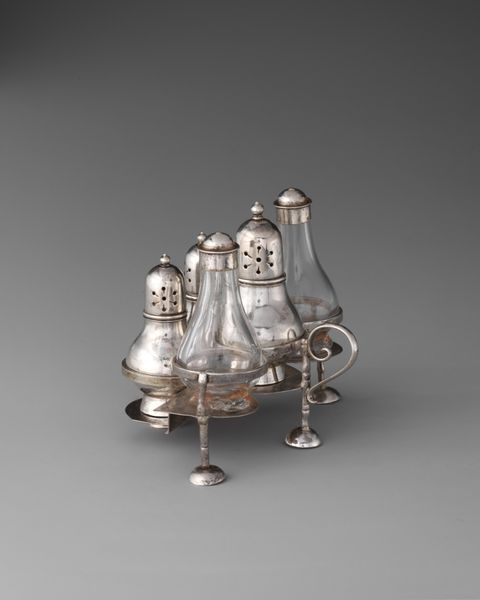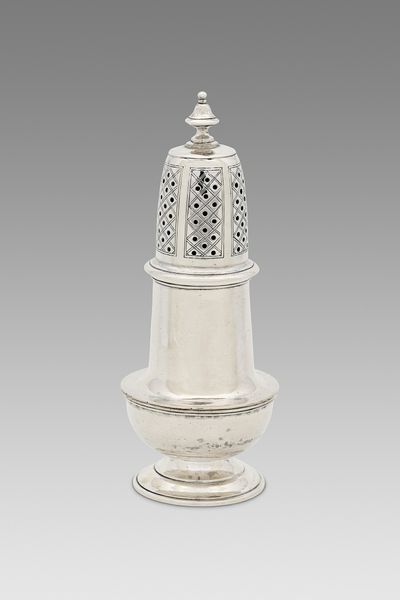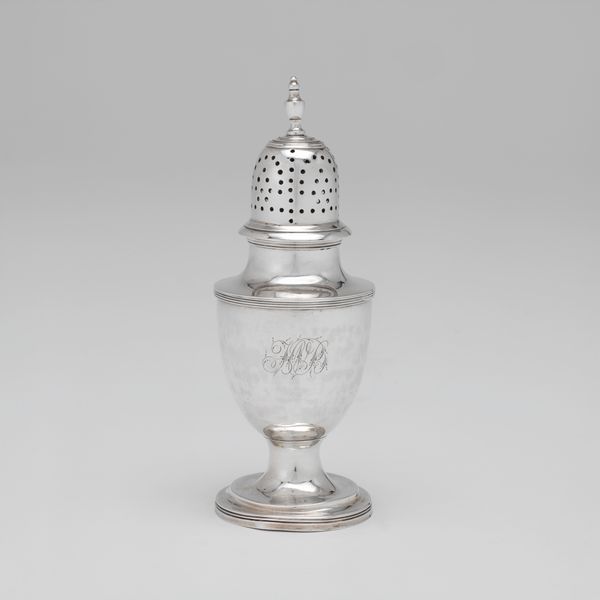
silver, sculpture
#
silver
#
sculpture
#
united-states
#
decorative-art
#
rococo
Dimensions: Overall: 4 7/8 x 2 11/16 in. (12.4 x 6.8 cm); 5 oz. 4 dwt. (162.1 g) Foot: Diam. 2 1/4 in. (5.7 cm) Lip: Diam. 1 3/4 in. (4.4 cm) Body: H. 3 3/8 in. (8.6 cm); 4 oz. 4 dwt. (131.3 g) Cover: H. 1 7/8 in. (4.8 cm); 1 oz. (30.8 g)
Copyright: Public Domain
Curator: Oh, my! This is quite something—it’s a silver caster, created in the United States between 1730 and 1740. Note the rococo style evident in the piece. Editor: It's smaller than I imagined! And cold to look at—like polished moonlight. So precise, almost severe, but then those little pierced openings at the top are wonderfully delicate. They give it a surprising lightness. Curator: Absolutely, those delicate perforations speak to the shifting aesthetic sensibilities of the era. But beyond mere decoration, the caster symbolizes colonial power and privilege. The very presence of such ornate silverware on a table underscores notions of social standing and economic power. The American colonies were developing complex class systems then. Editor: It’s a spice shaker? A sprinkle of luxury! It makes me wonder about the hands that touched it, and the faces around the table. Was it for show or truly used every day? Were they conscious of the privilege, or did this object simply melt into the background of their lives? Curator: Consider also the likely source of the silver itself, perhaps mined using exploited labor, and the social inequalities that allowed for its creation in the first place. What this single object carries—within the metal itself—is an entire network of societal dynamics related to identity, race and even class. Editor: It’s fascinating how an object so small can feel so loaded. It looks so…controlled, everything neatly in place. The sharp facets. But, the small decorative lion gives it character. Almost humorous, like a silent playful gesture. Curator: That is likely an engraved crest denoting familial identity. Family lineage was exceptionally important. The piece also demonstrates emerging American artistry within a specific cultural and historical context, as makers were importing European styles while also forming their own vernacular interpretations of luxury. Editor: Seeing this really puts life in perspective, right? Centuries gone and here we are, still looking, still thinking, still making connections. All that remains now of the families it belonged to is, likely, the item itself. A little ghostly, really. Curator: Indeed, material objects can teach us quite a bit about those historical relationships and societal hierarchies that we’ve built and must begin to deconstruct. Thank you, it makes me rethink luxury entirely.
Comments
No comments
Be the first to comment and join the conversation on the ultimate creative platform.
